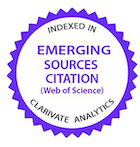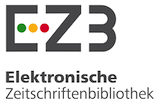Antioxidant potential of pequi esters (Caryocar coriaceum) in bovine semen cryopreservation and in vitro fertilization
DOI:
https://doi.org/10.1590/1809-6891v26e-80138EAbstract
Bovine semen cryopreservation is a fundamental procedure in animal reproduction. However, it is associated with the production of reactive oxygen species (ROS), which can cause significant damage to spermatozoa, leading to infertility and reduced sperm quality. In this context, using seminal diluents enriched with antioxidants presents a promising strategy for minimizing or even reversing these harmful effects. This study aimed to evaluate the effects of different concentrations of pequi (Caryocar coriaceum) esters as a supplement to bovine semen cryopreservation diluents. Fortytwo ejaculates were collected from six bulls that had undergone an andrological examination and were deemed suitable. The samples were analyzed, diluted in Tris–egg yolk medium, supplemented with pequi esters (0.0, 0.5, 1.0, and 1.5 mL/L), packaged, and cryopreserved. The sperm parameters evaluated in the post-thaw semen included the thermoresistance, plasma membrane functionality, cleavage and blastocyst rates, and quantification of reduced glutathione and malondialdehyde. The results showed that the concentrations of 1.0 and 1.5 mL/L of pequi esters significantly reduced malondialdehyde levels in cryopreserved semen. However, no significant effects of pequi esters were observed on motility parameters, sperm functionality, cleavage and blastocyst rates, or on the quantification of reduced glutathione. Supplementation with pequi ester (1.0 and 1.5 mL/L) in the cryopreservation of bovine semen may be beneficial in minimizing lipid peroxidation effects, as evidenced by the reduction in malondialdehyde concentration after thawing.
Downloads
References
Sapanidou V, Tsantarliotou MP, Lavrentiadou, SN. A review of the use of antioxidants in bovine sperm preparation protocols. Animal Reproduction Science. 2023; 251(4):1-11. https://doi.org/10.1016/j.anireprosci.2023.107215
Durairajanayagam D. Physiological role of reactive oxygen species in male reproduction. In: Henkel R, Samanta L, Agarwal A. (Eds.) Oxidants, Antioxidants and Impact of the Oxidative Status in Male Reproduction. Eds. Academic Press, 65–78. 2019. doi: https://doi.org/10.1016/B978-0-12-812501-4.00008-0
Baldi E, Tamburrino L, Muratori M, Degl’Innocenti S, Marchiani S. Adverse effects of in vitro manipulation of spermatozoa. Animal Reproduction Science. 2020; 220:106314. https://doi.org/10.1016/j.anireprosci.2020.106314
Pintus, E, Ros-Santaella JL. Impact of oxidative stress on male reproduction in domestic and wild animals. Antioxidants. 2021; 10(7), 1154. doi: https://doi.org/10.3390/antiox10071154
Lima A, Silva AMO, Trindade RA, Torres RP, Mancini-Filho J. Composição química e compostos bioativos presentes na polpa e na amêndoa do pequi (Caryocar brasiliense, Camb.). Revista Brasileira de Fruticutura. 2007; 29(3): 695-698. https://doi.org/10.1590/S0100-29452007000300052
Polewski K, Kniat S, Slawinska D. Gallic acid, a natural antioxidant, in aqueous and micellar environment: spectroscopic studies. Current Topics in Biophysics. 2002; 26(2), 217–227. https://www.researchgate.net/publication/284542596_Gallic_acid_a_natural_antioxidant_in_aqueous_and_micellar_environment_spectroscopic_studies
Miranda -Vilela AL, Akimoto AK, Alves PCZ, Pereira LCS, Gonçalves CA, Klautau-Guimarães MN, Grisolia CK. Dietary carotenoid-rich pequi oil reduces plasma lipid peroxidation and DNA damage in runners and evidence for an association with MnSOD genetic variant -Val9Ala. Genet. Mol. Res. 2009; 8, 1481-1495. doi: https://doi.org/10.4238/vol8-4gmr684.
AOCS – American Oil Chemists’ Society. 1993. Official Methods and Recommended Practices of the American Oil Chemists’ Society, 4th ed., AOCS, Champaign. https://library.aocs.org/
CBRA – Colégio Brasileiro de Reprodução Animal. Bovinos. Manual para exame andrológico e avaliação de sêmen animal. 3. ed. CBRA. Belo Horizonte-MG, p. 47-50, 2013. Disponível em: http://cbra.org.br/br/
Vianna F P, Papa FO, Zahn FS, Melo CM, Dell’Aqua Jr. JA. Thermoresistance sperm tests are not predictive of potential fertility for cryopreserved bull sêmen. Animal Reproduction Science. 2009; 113, 279-282. doi: https://doi.org/10.1016/j.anireprosci.2008.06.009
Correa JR, Zavos PM. The hypoosmotic swelling test: Its employment as an assay to evaluate the functional integrity of the frozen-thawed bovine sperm membrane. Theriogenology. 1994 Aug 1;42(2):351-60. doi: https://doi.org/10.1016/0093-691X(94)90280-1
Melo MIV, Henry M. Teste hiposmótico na avaliação da viabilidade do sêmen equino resfriado com diferentes diluidores. Arquivo Brasileiro de Medicina Veterinária e Zootecnia. 2005;57(6), 757-763. doi: https://doi.org/10.1590/S0102-09352005000600009
Vasconcelos AB, Zandonaide JBZ, Sobrinho ALF, Silva BO, Quintal PNQ. A comparative study of three different dyes evaluating the physical integrity of the plasma membrane of cryopreserved bovine spermatozoa. Veterinária Notícias. 2017; 23(1), 13-22. http://dx.doi.org/10.14393/VTV-v23n1-2017.2
Oliveira CS. Biotécnicas da reprodução em bovinos: minicursos ministrados durante o 3º Simpósio “Biotécnicas da Reprodução em Bovinos” no Laboratório de Reprodução Animal do Campo Experimental Santa Mônica / Clara Slade Oliveira, Raquel Varela Serapião e Carolina Capobiango Romano Quintão. – Juiz de Fora: Embrapa Gado de Leite, 2014. 52 p. (Embrapa Gado de Leite. Documentos, 175). http://www.infoteca.cnptia.embrapa.br/infoteca/handle/doc/1001858
Leibfried L, First NL. Characterization of bovine follicular oocytes and their ability to mature in vitro. Journal of Animal Science. 1979 Jan; 48(1): 76-86. doi: https://doi.org/10.2527/jas1979.48176x.
Bó GA, Mapletoft RJ. Evaluation and classification of bovine embryos. Animal Reproduction. 2013; 10(3):344-348.
https://www.animal-reproduction.org/article/5b5a604cf7783717068b46a2
Buege JA, Aust SD. Microsomal lipid peroxidation. Methods Enzymol. 1978; 52:302-10. doi: https://doi.org/10.1016/S0076-6879(78)52032-6.
Machado, M.T.C.; Mello, B.C.B.S.; Hubinger, M.D. Study of alcoholic and aqueous extraction of pequi (Caryocar brasiliense Camb.) natural antioxidants and extracts concentration by nanofiltration. Journal of Food Engineering, v.117, p.450– 457, 2013. https://doi.org/10.1016/j.jfoodeng.2012.12.007
Barros, F N. Efeito da adição do ácido araquidônico e do ácido oleico ao diluidor tris-gema sobre a viabilidade espermática póscongelação em sêmen caprino. 2021. 88 f. Tese (Doutorado em Ciência Animal) – Universidade Federal do Piauí. 2021. http://repositorio.ufpi.br:8080/handle/123456789/2814
Ferramosca A, Zara V. Diet and male fertility: The impact of nutrients and antioxidants on sperm energetic metabolism. International Journal of Molecular Sciences. 2022; 25;23(5):2542. doi: https://doi.org/10.3390/ijms23052542.
Beygi Z, Forouhari S, Mahmoudi E, Hayat SMG, Nourimand F. Role of oxidative stress and antioxidant supplementation in male fertility. Current Molecular Medicine. 2021;21(4):265-282. doi: https://doi.org/10.2174/1566524020999200831123553
Hossain MDS, Tareq KMA, Hammano K, Tsujii H. Effect of fatty acids on boar sperm motility viability and acrosome reaction. Reproductive Medicine and Biology. 2007; 6: 235-239 ... doi: https://doi.org/10.1111/j.1447-0578.2007.00191.x. PMID: 29699281; PMCID: PMC5904605.
Almeida J, Brito M, Neves BP, Becerra VAB, Auler PA, Haddad JP, Baruselli PS, Henry M. Use of cooled buffalo semen as a strategy to increase conception rates in fixed-time artificial insemination programs during unfavorable reproductive periods. Arquivo Brasileiro de Medicina Veterinária e Zootecnia (online). 2021; 73(3): 560-570. https://doi.org/10.1590/1678-4162-12142
Khan IM, Cao Z, Liu H, Khan A, Rahman SU, Khan MZ, Sathanawongs A, Zhang Y. Impact of Cryopreservation on Spermatozoa Freeze-Thawed Traits and Relevance OMICS to Assess Sperm Cryo-Tolerance in Farm Animals. Frontiers in Veterinary Science. 2021; 8; 1-14. doi: https://doi.org/10.3389/fvets.2021.609180.
Ugur MR, Abdelrahman AS, Evans HC, Gilmore AA, Hitit M, Arifiantini RI, Purwantara B, Kaya A, Memili E. Advances in Cryopreservation of Bull Sperm. Frontiers in Veterinary Science. 2019; 1-15. https://doi.org/10.3389/fvets.2019.00268.
Zhang B, Wang Y, Wu1 C, Qiu S, Chen X, Cai B, Xie H. Freeze-thawing impairs the motility, plasma membrane integrity and mitochondria function of boar spermatozoa through generating excessive ROS. BMC Veterinary Research. 2021;17;127: 1-9. doi: https://doi.org/10.1186/s12917-021-02804-1.
Aitken J, Fisher H. Reactive oxygen species generation and human spermatozoa: the balance of benefit and risk. Bioessays. 1994 Apr; 16(4): 259-67. doi: https://doi.org/10.1002/bies.950160409. PMID: 8031303.
Bilodeau JF, Chatterjee S, Sirard MA, Gagnon C. Levels of antioxidant defenses are decreased in bovine spermatozoa after a cycle of freezing and thawing. Mol Reprod Dev. 2000 Mar;55(3):282-8. doi: https://doi.org/10.1002/(SICI)1098-2795(200003)55:3<282::AID-MRD6>3.0.CO;2-7
Viana, A. M. F. Efeito da polpa de pequi (Caryocar brasiliense Cambess) nas alterações hepáticas induzidas pela dieta hiperlipídica em ratos. 2015. 108 f. Dissertação (Mestrado em Saúde e Nutrição) - Escola de Nutrição, Universidade Federal de Ouro Preto, Escola de Nutrição, Ouro Preto, 2015. https://www.repositorio.ufop.br/items/248df98a-f4eb-435b-b53b-1b8155199115
Vasconcelos SML, Goulart MOF, Moura JBF, Manfredini V, Benfato MS, Kubota LT. Espécies reativas de oxigênio e de nitrogênio, antioxidantes e marcadores de dano oxidativo em sangue humano: principais métodos analíticos para sua determinação. Química Nova. 2007; 30(5), 1323-1338. https://doi.org/10.1590/S0100-40422007000500046
Published
How to Cite
Issue
Section
License
Copyright (c) 2025 Brazilian Animal Science/ Ciência Animal Brasileira

This work is licensed under a Creative Commons Attribution 4.0 International License.
Authors who publish with this journal agree to the following terms:
- Authors retain copyright and grant the journal right of first publication with the work simultaneously licensed under a Creative Commons Attribution License that allows others to share the work with an acknowledgement of the work's authorship and initial publication in this journal.
- Authors are able to enter into separate, additional contractual arrangements for the non-exclusive distribution of the journal's published version of the work (e.g., post it to an institutional repository or publish it in a book), with an acknowledgement of its initial publication in this journal.
- Authors are permitted and encouraged to post their work online (e.g. in institutional repositories or on their website) prior to and during the submission process, as it can lead to productive exchanges, as well as earlier and greater citation of published work (See The Effect of Open Access).
Data statement
-
The research data is available on demand, condition justified in the manuscript































